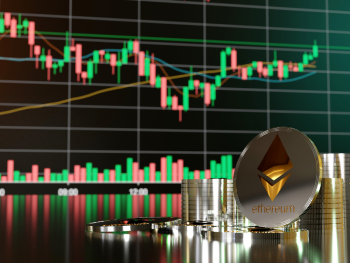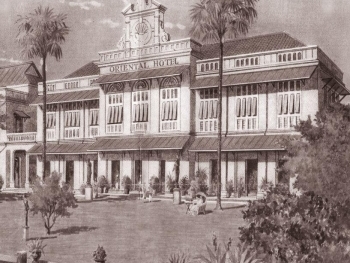Museums are the gatekeepers of human history, preserving and showcasing everything from ancient relics to contemporary art. Their evolution reflects humanity’s journey—from early collections of curiosities to today’s dynamic, interactive institutions. But how did museums develop into the cultural powerhouses they are today? This article traces the fascinating history of museums, from their origins in ancient civilizations to their modern role in society.
1. The Origins: Collecting the Wonders of the World
Ancient Mesopotamia and Egypt: The First “Museums”
The concept of preserving and displaying objects dates back thousands of years. Some of the earliest known collections belonged to ancient Mesopotamian and Egyptian civilizations. Rulers and priests amassed valuable artifacts, religious relics, and treasures, often keeping them in temples and palaces.
One of the first recorded examples of a museum-like institution was founded around 530 BCE in Babylon by Princess Ennigaldi-Nanna, daughter of King Nabonidus. Her collection included artifacts from even older civilizations, carefully labeled with inscriptions—making it one of the earliest curated exhibitions in history.
The Classical World: Greek and Roman Museums
The word “museum” itself comes from the Greek mouseion, meaning “a place of the Muses” (the goddesses of art and knowledge). In ancient Greece, institutions such as the Library of Alexandria (3rd century BCE) functioned as centers of learning, where scholars gathered to study philosophy, science, and art.
The Romans continued this tradition, creating extensive private collections of Greek sculptures, manuscripts, and exotic artifacts from conquered lands. Wealthy individuals, such as generals and emperors, displayed these collections in their homes, much like personal museums. However, these were mostly private affairs, not open to the general public.
2. The Middle Ages: Churches and Cabinets of Curiosities
Religious Treasuries as Early Museums
During the Middle Ages, Europe saw a shift in how artifacts were preserved. Many rare and valuable objects were stored in churches and monasteries, often as religious relics. These included holy scriptures, gold-adorned chalices, and ancient manuscripts. Pilgrims traveled great distances to view these treasures, turning churches into proto-museums.
Renaissance and the Birth of the "Cabinet of Curiosities"
The Renaissance (14th–17th centuries) brought renewed interest in art, history, and science. Wealthy patrons, particularly in Italy, began amassing collections of rare books, artworks, and antiquities. These collections, known as cabinets of curiosities (Wunderkammern in German), were displayed in private rooms or elaborate wooden cabinets.
Prominent collectors included the Medici family of Florence, whose vast art collections eventually formed the core of the Uffizi Gallery. These cabinets of curiosities laid the groundwork for modern museums, as they encouraged systematic collecting and display practices.
3. The 17th–18th Century: The Birth of Public Museums
The First Public Museums
The idea of museums as public institutions emerged in the 17th and 18th centuries, driven by Enlightenment ideals. Knowledge was no longer reserved for the elite; instead, there was a push for education and accessibility. Some of the earliest public museums included:
-
Ashmolean Museum (Oxford, 1683): Established by Elias Ashmole, this was the first university museum in the world, housing natural history specimens, scientific instruments, and antiquities.
-
British Museum (London, 1753): Founded by Sir Hans Sloane, it became the first national public museum, free for all “studious and curious persons.”
-
Louvre Museum (Paris, 1793): Originally a royal palace, the Louvre was transformed during the French Revolution into a public museum, displaying treasures seized from the monarchy and aristocracy.
These museums signaled a shift in philosophy—art and history were now for the people, not just the privileged few.
4. The 19th Century: Expansion and Specialization
The 19th century saw an explosion in museum growth, fueled by colonial expeditions, scientific discoveries, and industrialization. European powers collected artifacts from around the world, leading to the expansion of museum collections.
The Rise of National and Specialized Museums
During this period, many countries established national museums, such as:
-
The Smithsonian Institution (Washington, D.C., 1846): A vast network of museums focused on science, history, and culture.
-
The Prado Museum (Madrid, 1819): Showcasing Spanish art and royal collections.
-
The Egyptian Museum (Cairo, 1902): Dedicated to preserving Egypt’s vast archaeological heritage.
Museums also began to specialize. Natural history museums, such as the American Museum of Natural History (1869), focused on fossils, minerals, and biological specimens. Meanwhile, industrial museums, like the Science Museum in London (1857), highlighted technological advancements.
5. The 20th Century: Modernization and Accessibility
Technology and the Changing Role of Museums
The 20th century brought a revolution in how museums functioned. Rather than just displaying objects, they became educational institutions with interactive exhibits, guided tours, and digital resources.
One of the most significant changes was the rise of science and technology museums, such as the Exploratorium (San Francisco, 1969), which introduced hands-on learning. Similarly, art museums embraced modernism, displaying works by contemporary artists like Picasso and Warhol alongside classical masterpieces.
Decolonization and the Ethical Debate on Artifacts
As former colonies gained independence, museums faced increasing pressure to return artifacts taken during imperial rule. This led to major debates about the ownership of cultural heritage. Institutions like the British Museum and the Louvre continue to face calls to repatriate artifacts, such as the Benin Bronzes and the Rosetta Stone.
6. The 21st Century: Digital Museums and the Future
Virtual Museums and Augmented Reality
The digital revolution has transformed museums once again. Many institutions now offer virtual tours, allowing people to explore collections from anywhere in the world. For example:
-
The Google Arts & Culture Project partners with museums to digitize artworks and historical objects.
-
Museums like the Van Gogh Museum (Amsterdam) use augmented reality (AR) to bring paintings to life.
Socially Engaged Museums
Modern museums are not just about displaying artifacts—they are actively involved in social issues, environmental advocacy, and cultural representation. Museums such as the National Museum of African American History and Culture (Washington, D.C.) and the Museum of Memory and Human Rights (Chile) focus on telling stories of marginalized communities and historical injustices.
Museums as Guardians of Humanity’s Story
From ancient royal collections to high-tech virtual exhibitions, museums have continuously evolved to reflect the changing needs of society. They are no longer just places to see artifacts—they are spaces for learning, discussion, and innovation.
As we move further into the 21st century, museums will likely continue embracing technology, ethical responsibility, and inclusivity. No matter how they change, their core purpose remains the same: to preserve the story of humanity for future generations. 🎨🏺



